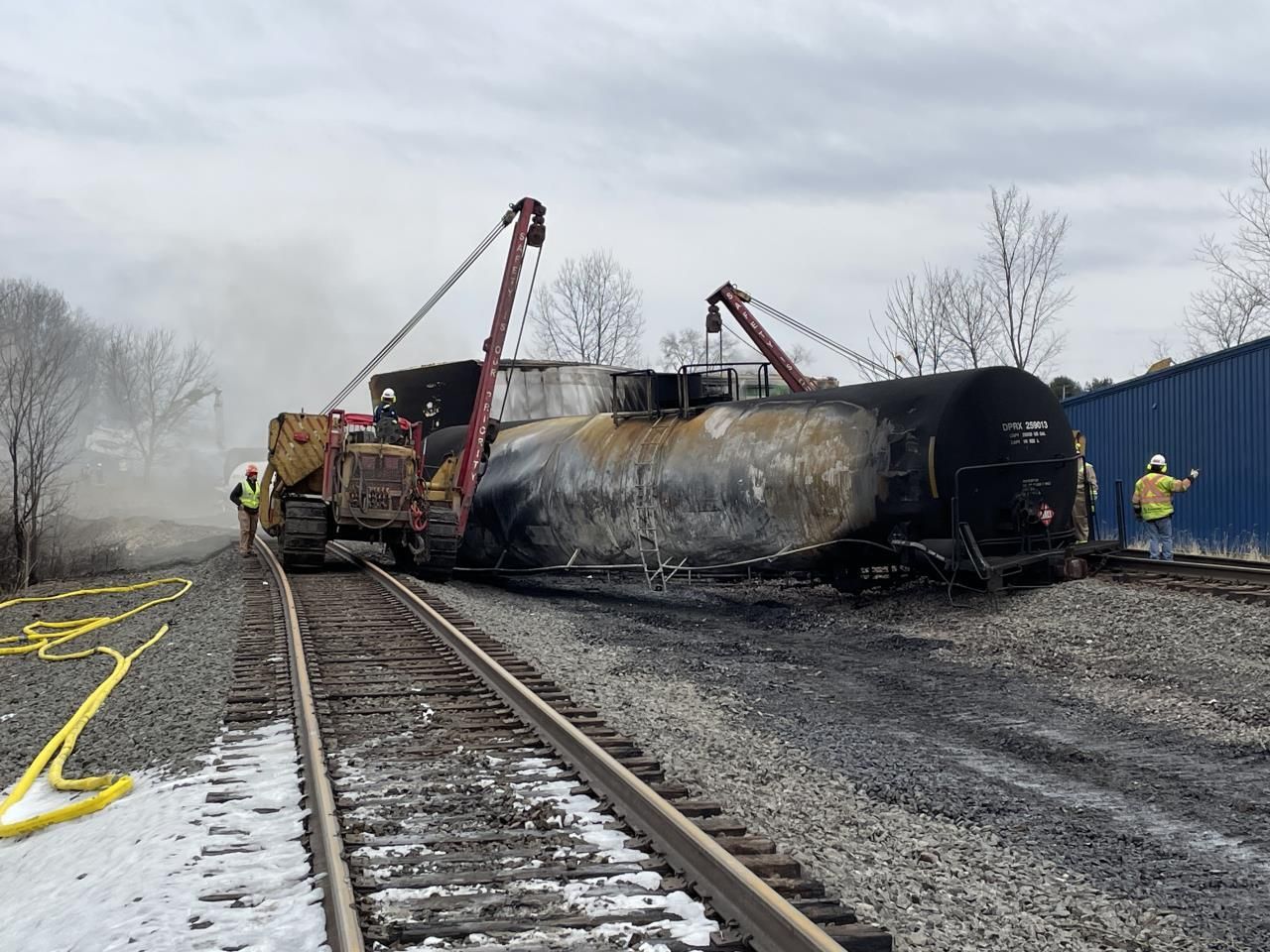
Public Health and Preparedness — Ohio Train Derailment
When it comes to public health threats, you never know when a disaster will strike. The threats to public health are myriad—ranging from biological (as evidenced by the COVID-19 pandemic) to environmental, and from manmade (such as the opioid epidemic) to natural disasters. Luckily, the U.S. has response teams in place to act quickly in times of great public health need. In the initial days following an environmental disaster, for instance, public health and preparedness teams often coordinate closely with disaster response teams to help ensure that public safety and health are not jeopardized.
A good example of this coordination can be seen in the recent train derailment in East Palestine, Ohio, which resulted in the spillage of toxic chemicals and a cascade of events that pose further health threats.
Here’s what you need to know about the derailment, its potential public health threats, and why public health and protection matters.
What Happened in East Palestine?
In early February 2023, a freight train carrying hazardous materials derailed in the town of East Palestine, Ohio. This derailment caused 11 tank cars to ignite, spewing toxic chemicals into the air. Subsequently, officials initiated a controlled detonation of some of the cars involved to try to burn off the toxic chemicals and prevent a larger explosion. Five days later, a tank car was found to be leaking oil and this oil was pooling onto the soil.
What Public Health Threats Were Posed by the Derailment in East Palestine?
A number of potential public health threats have been considered as a consequence of February’s derailment. First, the freight trains that derailed were carrying vinyl chloride, which is known to be a human carcinogen. They were also carrying butyl acrylate, ethylhexyl acrylate, and ethylene glycol monobutyl ether, all of which are known irritants and some of which may be potentially carcinogenic. In addition to these listed chemicals, many byproducts were produced by the subsequent controlled detonation and fire. These byproducts may include dioxins, which are notoriously harmful.
The impact of this incident on the health of the nearly 5,000 residents of East Palestine has been magnified by the fact that some residents have experienced unusual symptoms. After being evacuated from their homes following the derailment, when residents were allowed to return, many reported symptoms such as rashes, nausea, problems breathing, and headaches after entering their homes. While air quality monitoring did not reveal detectable levels of contaminants at the time, these symptoms were alarming, and further investigations are ongoing.
How Are Public Health Threats Being Monitored and Addressed in East Palestine?
It’s impossible to calculate the totality of the public health threat posed by the derailment, but officials have been surveying air, groundwater, and soil in the affected region to determine whether contamination levels have risen above the accepted standard. It’s important to know, however, that many of the threats may not be immediately identifiable. Unfortunately, it may take years to fully understand the impact of the derailment, spillage, and fire. One public health epidemiologist suggests that seasonal monitoring and testing of groundwater should occur for the next five years.
Why Public Health and Protection Matters
When the train derailment in East Palestine occurred, many first responders and governmental agencies, such as the Environmental Protection Agency (EPA) and the National Transportation Safety Board (NTSB), took swift action to begin stabilization, decontamination, and investigation efforts. However, when an emergency such as this occurs, it’s vital that public health organizations immediately become involved, as well.
Public health prioritizes the safety and wellness of residents, and often public health protection measures outlast other emergency campaigns. The public health lens can provide a reflective approach that considers the immediate potential health effects inherent in a given disaster scenario, as well as how public health may be affected in the long term. This ongoing action can make all the difference in identifying and capturing the full picture when it comes to the safety and well-being of residents.
How to Learn More About Public Health Efforts in East Palestine, Ohio
Public health professionals have a duty to communicate about the potential threats posed by events such as the train derailment in East Palestine and to organize effective strategies to manage these threats. To learn more about how agencies are coming together to help secure emergency funding and public health support for the community affected by this disaster, check out this press release from the U.S. Department of Health and Human Services (HHS).
Research and materials for this article were compiled, written, and distributed on behalf of the National Public Health Information Coalition. The views and opinions expressed in this blog are those of the various authors and do not necessarily reflect the official policy or position of the National Public Health Information Coalition or its members.
Sources
[1] It’s been more than a month since a freight train carrying hazardous chemicals derailed in Ohio. Here’s what’s happened since. https://www.cnn.com/2023/02/23/us/east-palestine-ohio-train-derailment-timeline/index.html
[2] Ohio Train Derailment: A Plan of Action for Public Health. https://ysph.yale.edu/news-article/ohio-train-derailment-public-health-next-steps/
[2] HHS Awards Emergency Funding for Community Health Center Supporting East Palestine, Ohio Residents. https://www.hhs.gov/about/news/2023/03/06/hhs-awards-emergency-funding-community-health-center-supporting-east-palestine-ohio-residents.html

